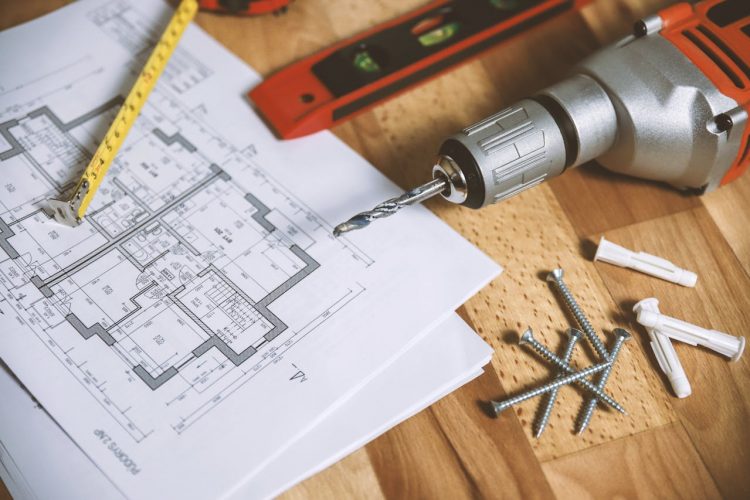Living in a small home renovations comes with its set of challenges, with limited space being at the forefront. Homeowners often struggle to find room for storage, entertainment, and relaxation without the area feeling cluttered or cramped. However, the constraints of a small space also inspire creativity and innovation in home design and organization.
Benefits of Thoughtful Space Maximization
Thoughtfully maximizing space in a small home renvations not only enhances its aesthetic appeal and functionality but also significantly improves the quality of life for its inhabitants. Effective space utilization can make a home feel more spacious and inviting, create multipurpose areas, and reduce clutter. Moreover, a well-organized small home can increase efficiency in daily routines and make maintenance easier.
Assessing Your Space
Identifying Underutilized Areas
The first step in maximizing space is to conduct a thorough assessment of your current layout and identify underutilized areas. Look for spaces that are seldom used, such as corners, high walls, and areas under furniture. These spots often offer untapped potential for storage or decoration.
Prioritizing Needs and Goals for Space Usage
Once you’ve identified potential areas for improvement, prioritize your needs and goals. Consider what aspects of your home life require the most attention—whether it’s storage, a work area, or a place for relaxation—and use this as a guide to reorganize and redesign your space.
Creative Storage Solutions
Built-in Storage Ideas
Built-in storage solutions, such as recessed shelving, cabinets, and drawers, can significantly increase your home’s storage capacity without taking up additional floor space. Consider adding built-ins in traditionally unused spaces, like under staircases or in alcoves, to keep your belongings organized and out of sight.
Multi-functional Furniture and Hidden Storage Options
Furniture that doubles as storage is a game-changer in small homes. Look for beds with drawers underneath, ottomans with hidden compartments, and coffee tables with storage. These pieces provide the functionality you need without sacrificing valuable space.
Vertical Space Utilization
Don’t overlook the potential of vertical space. Installing shelves and cabinets that reach up towards the ceiling can dramatically increase your storage options. Wall-mounted systems allow you to customize your storage solutions and keep the floor clear, contributing to a more open and airy feel in your home.
Open Floor Plans and Multi-Functional Rooms
Breaking Down Walls: Creating an Open Concept Living Area
Transforming a small home starts with reimagining its layout. Removing non-load-bearing walls to create an open floor plan can make the living space feel larger and more welcoming. This approach fosters a sense of fluidity and connectivity between the living room, dining area, and kitchen, making it ideal for entertaining and everyday living.
Designing Rooms with Multiple Purposes
In a small home, each room should serve more than one function. A dining area can double as a workspace during the day, while a guest bedroom can also be a home office or a craft room. The key is in flexible design and furniture choices that allow easy transitions between functions.
Furniture and Layout Tips for Flexible Living Spaces
Select furniture that is lightweight and easy to move or has built-in flexibility, such as extendable dining tables or sleeper sofas. Use rugs and movable screens to define areas within an open space without blocking light or sightlines, maintaining the open feel while providing functional zones.
Space-Saving Ideas for Kitchens and Bathrooms
Compact Appliances and Fixtures
Opt for appliances and fixtures designed for small spaces, such as slim refrigerators, compact dishwashers, and corner sinks. These can significantly reduce spatial requirements while still providing full functionality.
Smart Cabinet and Shelving Solutions
Maximize storage by installing cabinets that reach to the ceiling and incorporating pull-out and fold-away shelves that make accessing items easier. Transparent or open shelving can also create a sense of openness, as opposed to solid, bulky cabinetry.
Utilizing Corners and Dead Spaces
Every inch counts in small kitchens and bathrooms. Corner storage solutions, such as carousel shelves in base cabinets or corner-mounted medicine cabinets, can turn previously unused spaces into valuable storage.
Using Light and Color to Enhance Spaciousness
Color Schemes That Make Rooms Look Larger
Light, neutral colors reflect lighter and make spaces appear larger. Consider soft tones of off-white, blue, and green for walls and large surfaces. Adding brighter or darker accent colors can add depth and interest without overwhelming the space.
Strategic Lighting Design to Open Up Spaces
Combine various types of lighting, such as ambient, task, and accent, to illuminate the space evenly and create the illusion of depth. Consider installing skylights or solar tubes to bring in natural light, further opening up the space.
Reflective Surfaces and Mirrors
Mirrors and glossy finishes can make a room feel more expansive by reflecting light and views. Consider mirrored closet doors or a large, decorative mirror on a focal wall. High-gloss paint on ceilings can also enhance this effect, making the ceiling feel higher.
Outdoor Space Considerations
Maximizing the utility and appeal of a small home often involves extending living spaces to the outdoors. Thoughtful design can transform patios, balconies, and yards into functional areas that serve as natural extensions of the indoor living space.
Extending Living Spaces Outdoors
Consider how outdoor areas can complement and extend the functionality of your indoor space. Decking, patios, and even small balconies can be outfitted with comfortable seating, lighting, and weather-resistant decor to create additional living areas.
Designing Multi-Functional Outdoor Areas
Multi-functional furniture, such as benches with built-in storage or collapsible tables, can make outdoor spaces versatile. Gardens can also be designed to serve multiple purposes, including dining, relaxing, and even small-scale food production.
Privacy and Aesthetic Enhancements
Privacy screens, tall plants, and trellises can provide seclusion and add visual interest to your outdoor space. Consider incorporating elements like water features or fire pits to enhance the aesthetic appeal and create a focal point for gatherings.
Technology and Smart Home Features for Space Efficiency
Incorporating technology and smart home features can significantly enhance the functionality and efficiency of small living spaces.
Incorporating Smart Home Technology for Convenience
Smart lighting, thermostats, and security systems offer convenience and can be controlled via smartphone, saving space that would otherwise be taken up by physical controls. Voice-activated devices can also reduce the need for physical storage of media and books.
Space-Saving Home Entertainment and Office Solutions
Wall-mounted televisions and projectors can save valuable floor space while providing high-quality entertainment. Similarly, fold-down desks and wireless technology can create a compact and efficient home office setup that blends seamlessly into your living space when not in use.
Automated Storage and Organization Systems
Consider investing in automated or motorized storage solutions that can help maximize space. Vertical carousel closets, for example, make use of ceiling height to store items efficiently and can be accessed with the push of a button.
Conclusion
Every small home is unique, and so are the needs of its inhabitants. Customizing solutions to fit your specific lifestyle and preferences is key to creating a space that is both functional and personal. Whether through DIY projects, smart technology, or innovative design, tailoring your space to suit your life can lead to a more organized, efficient, and enjoyable home.









